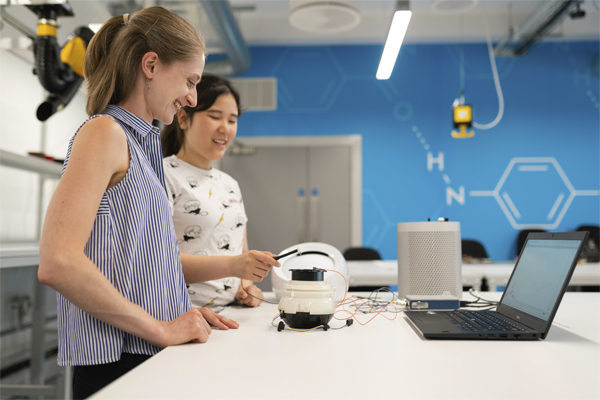The Institute for Women’s Policy Research’s (IWPR) has revealed the systemic barriers that prevent female inventors – particularly women of colour – from innovating and patenting.
IWPR’s latest research found that the obstacles women innovators face often stem from systemic barriers. They include the underrepresentation of women in STEM; expectations around household or caregiving duties; and ongoing stereotypes, discrimination and bias. The US Patent and Trademark Office (USPTO) has consistently found that women patent at significantly lower rates than their male peers.
The most recent data from USPTO found that only 22% of US patents list a woman as one of the inventors; and even fewer are women of colour.
BARRIERS TO INNOVATION
“Interviewing the inventors in this report allowed us to identify some of those obstacles and recommend solutions,” said IWPR researcher Elyse Shaw. “By providing women and people of colour with the resources they need to patent their inventions, companies, funders and policymakers could actively expand the innovation space; and help reach new heights of American ingenuity.”

“You don’t see people who look like us in leadership positions. Most of the inventors are White men who are engineers,” pointed out one Latina entrepreneur. “So, when you don’t see people who look like you that are doing certain things, you just can’t picture yourself doing it.”
The study also found that women lacked access to formal education on the patenting process; as well as mentors who could guide them. Positive mentorship experiences are a key factor in successful patenting; but a lack of women in leadership positions in STEM and other patent-heavy fields makes it more difficult for women to rely on mentors. The study also found similar challenges across academic, corporate and startup environments when it comes to access to professional networks and resources.
EXTENSIVE PROBLEM FOR WOMEN
“We’ve had anecdotal evidence for a long time that women face unique barriers to patenting. But having detailed personal accounts of individual inventors adds critical information and context to recognise how extensive the problem is,” added Holly Fechner, Executive Director of Invent Together. “A better understanding of the experiences of women who pursue patenting will also help us design solutions to ensure women; and other underrepresented groups in patenting today can reach their potential.”

“It’s time to create opportunities for women inventors,” said C Nicole Mason, President and CEO of IWPR; a leading think tank focused on improving the lives of and creating opportunities for women. “Everyone will benefit from the inventions of women and from women of colour, who bring new ideas to the table.”
BREAKING DOWN BARRIERS
The report concludes with recommendations about how to break down barriers that women confront in patenting. They include:
- Promoting early exposure to STEM for girls and young women from diverse backgrounds.
- Developing formal curricula on the patenting process.
- Tackling systemic racial and gender bias and discrimination.
- Investing in child care and work-life balance supports.
- Increasing support and funding for accelerator programmes for women.
- Better and increased access to quality patent attorneys.
- Increasing flexibility in government grant funding.
- More funding for women, particularly women of colour, for innovation and patenting.
The report, funded by Qualcomm provides an analysis of 21 in-depth interviews with inventors – 16 women and 5 men – who spoke about their experience at every stage of the patenting process. Among the 16 women inventors, 11 were women were colour. The inventors represented 14 different industries and were from 10 different states. Click here to download a copy of the report.
Anther report from IWPR makes a compelling case for parents who have not earned a degree to go back to college, to help close racial equity gaps and achieve a more equitable economic recovery post-pandemic. Click here to read more.








































